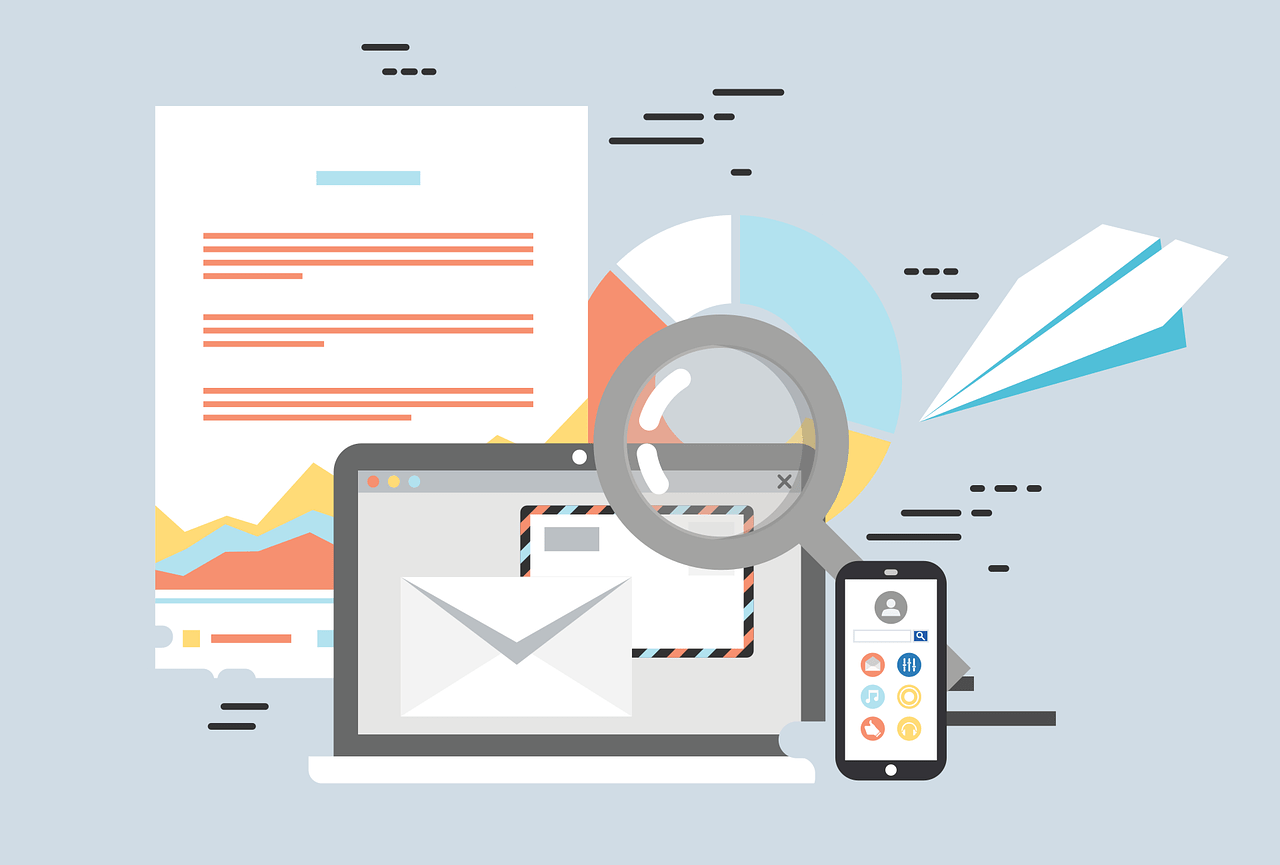Whether you’re selling products, services, or ideas, the ability to influence people’s decisions can be the difference between success and failure. One fascinating concept that aids in the art of persuasion is the “Decoy Effect.” This article will delve into the Decoy Effect, exploring how it can be used to boost sales and persuade customers effectively.
In today’s competitive marketplace, it’s not enough to have a great product or service; you need to convince customers to choose your offering over the alternatives. Persuasion is the key, and one of the most effective psychological principles in this regard is the Decoy Effect. This phenomenon plays on the human tendency to change their preference between two options when presented with a third, seemingly less attractive option. It’s like a magician’s sleight of hand, guiding customers towards specific choices that benefit your business. To harness the Decoy Effect’s power, it’s essential to understand how it works and how to apply it strategically.
Understanding the Decoy Effect
Defining the Decoy Effect
The Decoy Effect, also known as the “asymmetric dominance effect,” is a psychological phenomenon that occurs when consumers change their preference between two options when presented with a third, seemingly less attractive option. It can influence decision-making by making one option appear more appealing than another.
In essence, the Decoy Effect introduces an element of choice architecture, shaping how people perceive and make decisions. For instance, consider a scenario where you’re presented with two smartphones: one with a high price and impressive features, and another with a lower price but fewer features. Now, introduce a third option – a slightly cheaper phone with almost no additional features. The third option becomes the decoy, making the second option with a lower price and fewer features appear as the best choice. Understanding this psychological trick is the first step in leveraging it effectively in sales and marketing.
How it Influences Decision-Making
To understand the Decoy Effect’s impact, imagine you’re at a cinema. You’re presented with two options for popcorn: a small bucket for $4 and a large bucket for $7. Many people might opt for the small bucket to save money. But what if a third option is introduced: a massive bucket for $8? This creates a decoy, making the large bucket for $7 appear like a great deal, and more people choose it.
The Decoy Effect manipulates the perceived value of options, directing customers towards the choice that businesses desire. It’s a psychological shortcut that leverages the human desire for relative value, helping consumers make decisions that align with the business’s goals. This phenomenon is not just theoretical; it’s a concept used by marketers and businesses around the world to increase sales and encourage specific choices.
Applying the Decoy Effect in Sales
How Businesses Can Leverage the Decoy Effect
Businesses can strategically employ the Decoy Effect by offering products or services in a way that guides customers toward their desired choices. For instance, a software company might introduce a basic, advanced, and pro version of its product, making the advanced option the most appealing by comparison.
Leveraging the Decoy Effect in sales often involves careful product or service packaging. It’s about presenting options in a way that highlights the most profitable or desirable choice. For instance, a coffee shop might introduce a small, medium, and large coffee. The medium coffee is the decoy, with a size and price that make the large coffee seem like the best value. Customers, influenced by this presentation, are more likely to choose the large coffee, resulting in higher profits for the coffee shop.
Tailoring Product Offerings
The Decoy Effect allows businesses to tailor their product offerings to steer customers toward the choices that benefit both parties. By understanding customer preferences, companies can design products that align with the Decoy Effect’s principles.
This tailoring goes beyond mere pricing and extends to the product features and bundles offered. For instance, a streaming service can create tiered subscriptions, with the middle tier offering just the right balance of content and price to appeal to the majority of their customers. By doing so, they guide customers towards a choice that’s beneficial for both the company and the user.
Pricing Strategies
Pricing strategies can be enhanced using the Decoy Effect. Companies can introduce pricing tiers that encourage customers to opt for the mid-tier option, which is often the most profitable choice for businesses.
In the context of pricing, the Decoy Effect comes into play when businesses offer three pricing options: low, medium, and high. The medium price, thanks to the Decoy Effect, appears as the optimal choice, striking a balance between affordability and quality. This strategy not only boosts sales but also maximizes profit margins.
By utilizing the Decoy Effect, businesses can make their offerings more appealing and guide customers towards choices that align with their objectives, ultimately driving growth and success.
Psychology Behind Persuasion
To master the art of persuasion, it’s crucial to understand the psychological factors at play.
Cognitive Biases and Their Role in Persuasion
Human decision-making is riddled with cognitive biases, which influence our choices. The Decoy Effect is just one example of how these biases can be harnessed to guide customers towards specific choices.
Cognitive biases are mental shortcuts that our brains take to simplify the decision-making process. They often lead us to make decisions that are not purely rational but influenced by various factors. Understanding these biases is essential for businesses, as it allows them to design their strategies, such as pricing and product presentation, to tap into these shortcuts effectively.
The Role of Emotions in Decision-Making
Emotions play a significant role in purchase decisions. Crafting persuasive content that appeals to customers’ emotions can greatly influence their choices.
People don’t make decisions based solely on facts and figures; emotions also play a vital role. Whether it’s the excitement of getting a new gadget or the satisfaction of making a wise choice, emotions shape our purchasing decisions. To harness the power of persuasion, businesses must create content that resonates with customers on an emotional level.
Building Trust with Customers
Importance of Trust in Sales
Trust is the cornerstone of any successful sales relationship. The Decoy Effect can be used to enhance trust by presenting options that align with customers’ interests.
Trust is the foundation of any successful business relationship. Customers are more likely to make purchases from companies they trust. This trust goes beyond merely trusting the quality of a product; it extends to trusting that the business has their best interests in mind. The Decoy Effect can be harnessed to enhance this trust by presenting options that align with the customers’ needs and preferences.
When customers feel that they are making informed choices, trust naturally develops. The Decoy Effect, when employed ethically, can help build this trust. For instance, if a customer perceives that a particular product option is the best fit for them due to the way it’s presented (thanks to the Decoy Effect), they are more likely to trust the company’s recommendations.
How the Decoy Effect Can Enhance Trust
The Decoy Effect can be a trust-building tool when used transparently and ethically. Businesses that employ this psychological principle need to ensure that the presented choices genuinely align with customer interests and needs. When customers perceive that the options presented are for their benefit, trust is fostered.
Moreover, when a company consistently uses the Decoy Effect to help customers make choices that serve them well, it reinforces the notion that the business is a reliable and customer-centric entity. This, in turn, strengthens the bond of trust, which is invaluable in the world of sales and marketing.
Crafting Persuasive Content
Writing Effective Sales Copy
Crafting persuasive content requires a deep understanding of your audience. By using language that resonates with your target market, you can engage and persuade effectively.
In the realm of sales, persuasive content often begins with compelling sales copy. Writing effective sales copy requires a deep understanding of the target audience. This understanding allows businesses to use language that resonates with their customers, connecting with their pain points, desires, and needs. The Decoy Effect can come into play here when presenting options in a way that resonates with the reader, making one choice more compelling than the others.
An effective copy doesn’t just list features and benefits; it tells a story that speaks to the customer’s heart and mind. It identifies the problem, offers the solution, and paints a picture of a better life with the product or service.
Engaging the Reader with Storytelling
Storytelling is a powerful tool in persuasive content. Sharing relatable stories can connect with customers on a personal level and make your products or services more appealing.
Storytelling is a time-honored technique for persuasion. Humans have been sharing stories for millennia, and this practice continues to be effective in the digital age. Stories are relatable; they can connect with customers on a personal level and make products or services more appealing. When applied alongside the Decoy Effect, storytelling can further guide customers towards choices that align with business objectives.
Great sales stories identify the customer’s problem, present the product or service as the solution, and show the transformation that occurs after choosing it. It’s about tapping into emotions and allowing the customer to visualize the benefits, creating a compelling narrative that leads to action.
Leveraging Social Proof
Utilizing Testimonials and Reviews
Social proof is an invaluable asset in sales. Encourage satisfied customers to leave testimonials and reviews, as this can significantly influence potential buyers.
Social proof is a powerful psychological concept that plays a crucial role in influencing consumer decisions. It’s the idea that people tend to follow the actions and recommendations of others. One of the most effective ways to leverage social proof is through testimonials and reviews. Encouraging satisfied customers to share their positive experiences with your product or service can significantly impact potential buyers.
When prospects see that others have had a good experience and benefited from your offering, it can create trust and confidence in your brand. The Decoy Effect can enhance this trust by presenting the right choices that align with what satisfied customers have experienced. This strengthens the social proof and makes your offering even more compelling.
Building Credibility Through Social Proof
In addition to testimonials and reviews, businesses can build credibility through other forms of social proof. These can include endorsements from industry experts, certifications, awards, and trust badges on your website. When potential customers see that reputable sources or authorities endorse your brand, it can further enhance your credibility and the persuasiveness of your offerings.
Building credibility through social proof reinforces the idea that your product or service is trustworthy and of high quality. The Decoy Effect can be used to present these forms of social proof in a way that guides customers towards options that benefit them the most, ultimately leading to higher conversion rates and sales.
Overcoming Objections
Identifying Common Objections in Sales
Understanding the objections customers might have is a crucial step in persuasion. Addressing these objections effectively can lead to successful sales.
In sales, objections are common. Customers may have concerns or doubts that hinder their decision to purchase. Identifying these objections is essential for effective persuasion. Businesses need to anticipate and understand the objections customers might have.
Common objections can relate to factors such as price, product features, competition, trust, or past experiences. The Decoy Effect can be utilized in addressing objections by presenting choices that effectively counter these objections. For instance, if price is a common objection, a well-structured pricing strategy that leverages the Decoy Effect can make the middle option, which offers a balanced price and value, the most attractive choice.
Strategies to Address Objections Effectively
Once objections are identified, it’s essential to have strategies in place to address them effectively. Businesses can create persuasive content and sales scripts that provide clear and convincing responses to objections. Using the Decoy Effect in these responses can guide customers towards choices that align with their needs and objections.
For example, if trust is a common objection, a business can present a choice that includes a comprehensive satisfaction guarantee or a transparent refund policy. These options can be structured in a way that makes the customer feel secure in their decision, reducing trust-related objections.
In conclusion, mastering the art of persuasion is an essential skill for businesses seeking to boost sales. The Decoy Effect, as a powerful psychological principle, can be harnessed to guide customers towards choices that align with your business objectives. When used ethically and transparently, the Decoy Effect can be a valuable tool in your marketing and sales strategies. It’s about understanding human psychology and leveraging that knowledge to create offerings and content that resonate with your target audience.
Throughout this article, we’ve explored how the Decoy Effect can be used to shape product offerings, influence pricing strategies, build trust, craft persuasive content, leverage social proof, and overcome objections. These elements collectively contribute to a persuasive sales strategy that not only boosts sales but also fosters lasting customer relationships.
Frequently Asked Questions
- What is the Decoy Effect, and how does it work?The Decoy Effect, also known as the “asymmetric dominance effect,” is a psychological phenomenon that influences decision-making. It occurs when consumers change their preference between two options when presented with a third, seemingly less attractive option. This makes one option appear more appealing than another.
- Can the Decoy Effect be applied to different industries?Yes, the Decoy Effect can be applied in various industries, from e-commerce to hospitality, as long as it is done ethically and aligns with customer preferences.
- How can I incorporate the Decoy Effect into my e-commerce business?To incorporate the Decoy Effect, you can create product offerings that guide customers toward choices that benefit both them and your business. Understand your customers’ preferences and design your options accordingly.
- Are there ethical considerations when using the Decoy Effect in sales?Yes, there are ethical considerations when using the Decoy Effect. It’s essential to be transparent and ensure that the choices presented genuinely align with customer interests and needs. Avoid using deceptive tactics that manipulate customers unfairly.
- What other psychological principles can enhance persuasion in sales?There are several other psychological principles that can enhance persuasion, including scarcity, social proof, reciprocity, and anchoring. Understanding these principles and how they influence decision-making can further improve your sales strategies.




